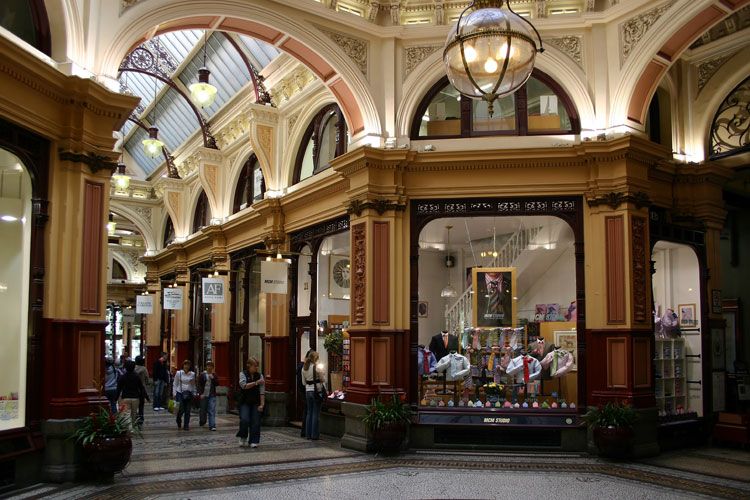
Photo Courtesy of Kaspars Grinvalds/Shutterstock
Australia is now a $1.07 billion AUD luxury market with the ninth highest concentration of high-net-worth individuals (HNWI) in the world. When it comes to luxury, Australia is a promising nation. Wealth is growing steadily at the hands of a resource boom; the population is increasingly well-traveled and the Internet has allowed international brands to pique the interest of Australian consumers like never before.
Yet rarely do we hear luxury brand executives or commentators discuss the market in Australia. We are well informed about the promise of Africa, South America and Southeast Asia, but Australia is generally lumped into annual reports and wealth research as a mere part of Asia-Pacific.

Photo Courtesy of FiledIMAGE/Shutterstock
Ayers Rock, the Great Barrier Reef and Sydney Harbour have long lured affluent tourists from neighboring Asian nations; forcing the development of luxury hotels and retail outlets as early as the 1980s. Australia now attracts more than half-a-million Chinese tourists each year that spent $3.8 billion AUD in 2011.
Tourism Australia believes the inbound Chinese market has the potential to be worth up to $9 billion alone by the end of the decade. Domestic wealth is also on the rise. Wealth X’s World Ultra Wealth Report 2012-2013 confirms that Australia is now home to 30 billionaires with a combined wealth of $90 billion. The UHNW population (net worth of $30 million and above) has reached 3,350 individuals with a total wealth of $410 billion — a population increase of 6.7 percent in 2012.

Photo Courtesy of Shutterstock
According to 2012’s Capgemini/RBS’s World Wealth Report, Australia has the ninth largest HNW population in the world (those with $1 million or more in investable assets); trailing Switzerland (8th), Canada (7th) and France (6th) while ahead of Italy (10th), Brazil (11th) and South Korea (12th). And increasingly, it is the locals that are driving the Australian luxury market. Spending of high-end products by local residents is estimated at 60-70 percent (Australian Luxury Market Report) — compared to 30-40 percent by tourists — eschewing the common belief that the market is entirely driven by tourists from Japan and China.
The value of international luxury brands in Australia in 2012 exceeded the $1 billion AUD mark for the first time, with sales revenue estimated at $1.07 billion AUD, an 11.4 percent increase on 2011. The increasing strength of Australia’s luxury market has been attributed in the report to several factors: the increase in HNW population, an increasing awareness of luxury and its brands, an improved range of products and points-of-sale and the emergence of Gen Y as a key consumer segment.

Photo Courtesy of Christian Louboutin
“While the 30-year evolution of free-standing luxury brand stores is relatively short, what is interesting is the speed of growth in the past ten years, particularly the past five,” explains managing director and founder of MO Luxury Melinda O’Rourke. “In Australia, there are now close to 500 points of sale-to-purchase fashion apparel, handbags, shoes, watches and fine jewelry (not including major department stores). In the past ten years there have been several new brands to market including Burberry, Dior, Coach, Bottega Veneta, Christian Louboutin, and Jimmy Choo to name a few.”
According to Euromonitor’s Luxury Goods in Australia Report, “Australian consumers have long felt like the cash cows of global brands. A wealthy country geographically isolated from much of the Western world, consumers were dealt a hefty premium for the convenience of purchasing their favorite brands domestically, with many estimates indicating a 30 percent price differential to international markets.”

Photo Courtesy of Shutterstock
“Post-GFC (Global Financial Crisis), the stellar performance of the Australian economy has brought new wealth, a stronger currency and more discerning consumers. Australians have flocked abroad to holiday and this has further fostered an appreciation for luxury. Simultaneously, consumers continue to move online to sites such as Net-A-Porter and My Wardrobe to satisfy their luxury demands.”
Indeed imports from sites such as Net-a-Porter (under the value of $1,000 AUD) are delivered to consumers without local or international sales tax. Pricing information available online has forced local retailers to be more globally competitive when it comes to margins, opening up the luxury world to a swelling middle class. Retail expansion in affluent suburbs is only further fueling the fire.

Photo Courtesy of Net-a-Porter
Euromonitor is confident that such prosperity is set to continue. “Resources booms will continue to create new wealth away from the traditionally wealthy South Eastern states. Australia’s positioning among many Asian nations as a premier holiday destination will also continue to support growth in luxury categories.”

Photo Courtesy of Coach
“With 23 million people and almost 500 points of sale-to-purchase, and with personal luxury goods sales coming in at $2.47 billion AUD in 2012, the luxury sector paints a very appealing picture with continued growth for the short to medium term,” echoes O’Rourke.
“There are a few clouds on the horizon,” she concedes, namely Australia’s vague economic state and dependence on China as both customer and an economy. “We can expect the luxury market to be affected by this during 2013. Nonetheless, the significant rise in international clients from other emerging Asian markets, as well as a growing domestic market, increased brands to market and points of sales, may cushion this downturn.”









